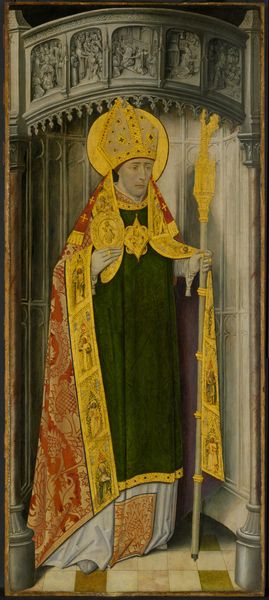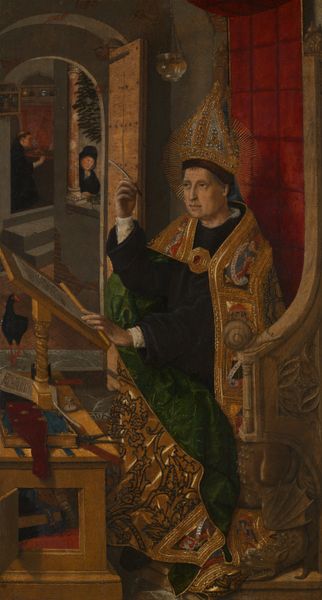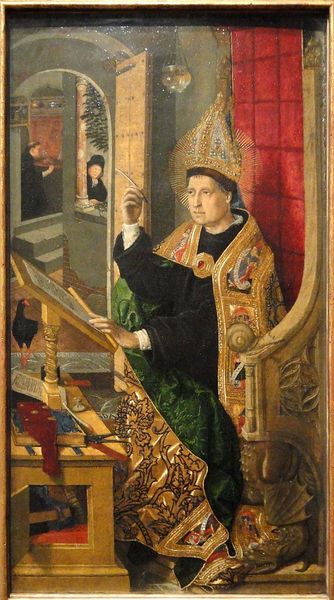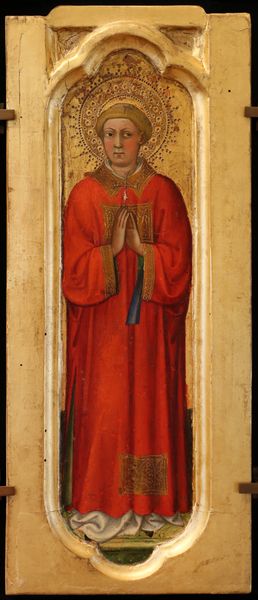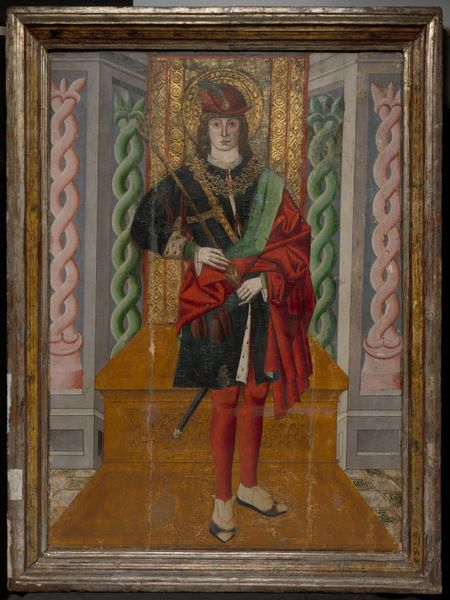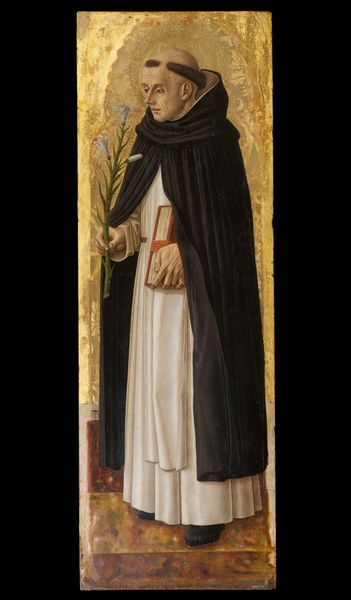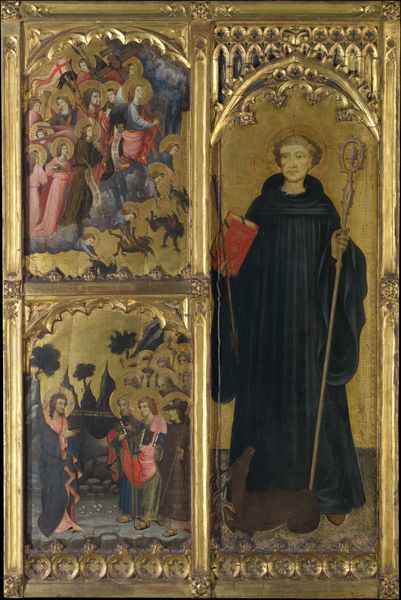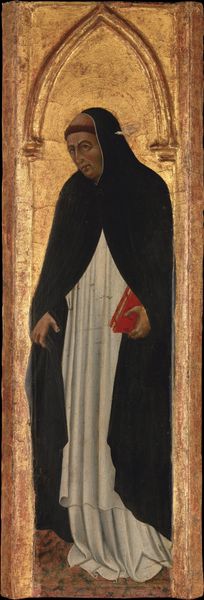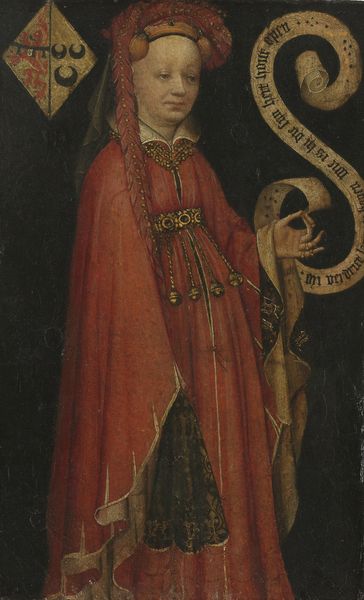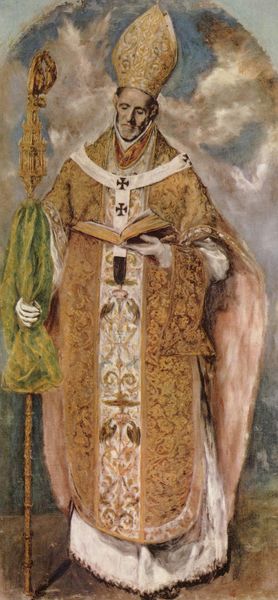
Altarpiece from Thuison-les-Abbeville: Saint Hugh of Lincoln 1490 - 1500
0:00
0:00
panel, painting, oil-paint
#
portrait
#
medieval
#
panel
#
painting
#
oil-paint
#
figuration
#
oil painting
#
history-painting
#
northern-renaissance
#
academic-art
Dimensions: Panel: 117 × 50.7 cm (46 1/16 × 19 15/16 in.); Painted Surface: 115.5 × 49.6 cm (45 1/2 × 19 9/16 in.)
Copyright: Public Domain
Curator: Before us hangs the “Altarpiece from Thuison-les-Abbeville: Saint Hugh of Lincoln," dating from around 1490 to 1500, a stunning example of Northern Renaissance oil painting on panel. The artist is unknown, but the mastery is undeniable. Editor: The first thing that strikes me is how solid it feels. Even with the stylized drapery and the heavenly figure in the background, the saint looks like a real, grounded person. It’s also a rather strange grouping of objects, visually—the goose, especially, feels peculiar and out of place, even though it matches the golds. Curator: The objects around Hugh are very deliberate choices meant to signify him. The swan or goose, depending on interpretation, became one of his emblems because of a famed swan he cared for at Lincoln Cathedral. The chalice suggests his dedication and sacrifice to God. Such emblems trigger communal memory, situating this panel within a specific devotional context. Editor: It makes you wonder about the process of manufacturing the piece too. That gilded surface must have taken tremendous skill. Gold leaf applied and burnished so meticulously – that wasn’t the kind of thing that would have been contracted out to any old workshop. This indicates serious investment from somewhere, maybe the church itself or a wealthy patron. What statement was intended by showcasing this level of production and conspicuous labor? Curator: Labor indeed—I’d say the gold conveys wealth and prestige. These figures would have affirmed the saint’s spiritual authority in a very material way. Gold as metaphor is not new but certainly amplified here the spiritual transcendence it represented for this community. The medium and choice of color support the symbolic representation of holiness and divinity within this painting. Editor: But it’s not *just* about conveying wealth and divinity, right? By literally showing the incredible value of such a display, are they not celebrating craft, human production and refinement? Curator: Yes, absolutely. The altarpiece creates this nexus point. It acknowledges the spiritual realm, its connection to our emotional selves and also acknowledges the material efforts, human work, and societal structures that shape our beliefs. Editor: It is this combination of high craft and loaded symbolism that creates this lingering power. One thinks of the process of creating this artwork: from the wood selection and carving to the patient and careful application of each material in order to have such an object. Curator: Ultimately, the enduring images carry forward, as symbols, reminders, testaments of a culture’s beliefs, all held within the artistry of its making.
Comments
No comments
Be the first to comment and join the conversation on the ultimate creative platform.
